Image: Ian Laidlaw
Booka Shade are the masterminds behind some of the most beloved club tracks of the 21st century. From the gracefully weaved synth stabs of In White Rooms to the iconic bassline of Body Language, the ever-evolving DJ and production duo have spent over 20 years populating dance floors globally, with a sound that enchants fans of Jean-Michel Jarre and Kraftwerk just as much as the most dedicated of club-goers.
With the pair beginning their career in the band Planet Claire alongside film score composer Peter Hayo, their synth-pop roots have followed them throughout their discography as Booka Shade, predominantly with albums such as 2008’s The Sun and the Neon Light and 2017’s Galvany Street. The duo have explored a vast expanse of sonic territory, with releases stretching back to the mid 90s and full length albums appropriate for home listening and dance venues alike.
The German duo recently returned to Melbourne for an iconic performance at Prince Bandroom, a venue they have called “a special Australian home away from home” in a short documentary shot by Red Bull Music. Over a 40 minute Skype call from Berlin to Sydney, we caught up with an enthusiastic Arno Kammermeier about their process, man’s relationship with machine and the “positive melancholy” of their latest album Cut the Strings.
Stoney Roads: A lot of the material on the new record is very cinematic in contrast to past records. What inspired you to explore more ambient territory?
Arno: I can see what you mean with songs such as Easy Drifter and Confessions. Those tracks are quite cinematic. One thing we wanted to achieve was a club feeling again, which doesn’t necessarily mean all the tracks have to be four to the floor, but always having this darker, more electronic feeling. Tracks like Easy Drifter for example: they’re not banging club tracks, but they have a lot of repetitive sequences and arpeggios that people can easily relate to in a club setting. An album like Movements caught a lot of the club vibe, but you can also listen to it at home. Many people have told us that they listen to that album after a club night, and we think Cut the Strings has a lot of that as well. After an album like Galvany Street, we felt like we had to do something completely different, so it’s a great feeling to return to a sound that Booka Shade is known for.
SR: A lot of people have described Cut the Strings as a dark record, but for me it seems to find this middle ground between tranquility and darkness. Is this balance of light and dark something you strive for?
A: Definitely. This is what we call positive melancholy. We picked the title for The Sun and the Neon Light exactly for this reason. We love the dynamic between night and day, these dark kind of atmospheres, not a negative kind of dark, but an embracing-the-night kind of feeling as well as the suspense of a club night. This takes us all the way back to the beginning of our work from Get Physical onwards. The very point of Get Physical was to capture the suspense of a club night, as well as the positive feeling of a great night with friends, in addition to this tactile atmosphere of sweating, dancing, being in the presence of others. This goes through our whole catalogue, I think. There’s always this club appeal. I don’t like the negative feelings in a lot of techno. That’s not what we’re like.
SR: What fascinates me about dance music is that while it can be really mechanical and artificial, there’s always a human charm to it, almost as if it’s like a meeting place of machines and human beings.
A: Absolutely, what excited us about electronic music as teenagers listening to bands such as Kraftwerk and Depeche Mode was the electronic aspect of it. New Order is a good example of this too. They’ve always had an electronic side but a very human side as well. Even if you take Kraftwerk and they have this man-machine side on one hand, you also have this retro science fiction vibe, and if you ever listen to them live, they’re more live than many rock bands! (laughs). Of course Kraftwerk have all this elaborate technology, but when you hear them perform, you hear that it’s live. It’s not as super tight as you’d imagine, but that’s the beauty of it. What we always like to have in our music is this starkly electronic sound, but it should still feel human you know? It shouldn’t feel cold.
SR: When listening to the new record, I couldn’t help noticing the contrast between these very vintage sounds merged with some contemporary and futuristic sounds. With Cut the Strings, did you want to find this sort of retro-futuristic balance?
A: It’s of course the tracks we chose for the album. We made a lot more tracks than we could fit on one album, so we chose these tracks because they work well together. We definitely still come from an album age. A cohesive album is very important for us, as opposed to just having 11 random songs one after the other. We always think about the track-listing: like whether or not a track should be earlier in the album or later. As for the sound of the album, we’re bringing a lot more hardware into our music than in the past.
From the second album onwards, a lot of the production was done in the box because we travel so much, and we like to perform as a band. Recently we’ve stepped a little bit back from that because both of us have families, and we need to prioritize what’s more important to us, which means a little bit less travelling. However, this also means that we’re in the studio a lot more often and using more hardware. EMS Love for example is titled the way it is because there’s a certain vocoder by this company EMS that we used a lot. With the latest album, bringing back the older hardware was fun for us, because it brought together these two sounds, of traveling a lot and using software, but also being in the studio at home.
SR: As a duo you seem to have a liking towards hardware, what are your thoughts on the rise of bedroom producers who create music entirely with software?
A: We use a lot of software ourselves. We like to embrace this sort of technology. A lot of producers say they can differentiate between a Minimoog and a software synth but I think it’s a lot of talk to be honest (laughs). We’ve been working in production for a good 30 years, and we work with professional tools and a lot of new technology. We use good technology of course, but I strongly believe that a good idea is a good idea, and if you have an interesting sound, it doesn’t matter where it comes from. I mean take a guy who changed the music world like Skrillex. When we first met him he was totally unknown, and we were playing as a support for Deadmau5 in America. Before us was this kid, and Deadmau5 said “hey, you should check this guy out!”. He showed us his laptop and it was a mess! It was broken, it was falling apart, and he showed us this bass sound that we didn’t understand at all. We thought it was crazy what he was doing, but he changed the electronic music landscape whether you like it or not. The point is, where the sound comes from is not important. If it reaches the heart of an audience and they love it, that’s what it’s all about.
SR: With your sound constantly evolving over the years, how do you think your process has changed since the Memento or Movements days?
A: In the last year and a half, we came to an understanding that we wanted to release more music in a shorter period of time. Galvany Street was released only a year ago, and this kind of opened up a new world for us. It was so important for us to do Galvany Street in order to break free, and to do something different to gain a fresher perspective of what Booka Shade can be: like the club side, but also the home-listening sort of side. This is what we want to condense a little bit more and make clear for ourselves as well as an audience. So an album like Cut the Strings was a good experience for us, to have something so spontaneous to happen like that. This is what we love doing now, and it’s we want to continue with.
SR: Since the remaster of Movements, you seem to have had a strong and consistent output of releases ever since. Do you ever have times when you experience a creative block?
A: We had a creative block around the time of EVE, and it got to the point where we weren’t sure if we could go on creating, but EVE ended up being a really good album, and it’s our second most successful after Movements. So after that record we had this period when we were like “well now we have to do something completely different, otherwise it’ll get boring”, and then came Galvany Street. But at the moment, the way we’re walking just feels right, so there’s no block. This is why it’s so important to keep doing things and to keep releasing stuff. I mean, it’s not as if after EVE we weren’t doing anything. We were constantly working, we just weren’t releasing anything, and that’s what we’re trying to change. Especially with our own label now, we can just make and release music whenever we want.
SR: There’s a lot more of a trance edge to a lot of these new tracks than past records. Was trance music a major influence on the record?
A: I think the trance feeling is present throughout all records. Take In White Rooms for example, when we played that track to our label mate DJ T, he called it a sort of neo-trance that, in the early 2000s, wasn’t very common at all. This takes us all the way back when Walter and I used to live in Frankfurt. The trance-y feel comes from the Frankfurt days in the 90s when Sven Vath played in his club The Omen, and the Frankfurt sound was always quite melodic. Sven Vath also ran his label called Eye Q which was quite trance-y as well, and this was a different sound than Berlin in the 90s. the Berlin sound was darker and dirtier whereas Frankfurt was always quite melodic, and I’d say that this is in the Booka Shade DNA. It can show itself in little sequences and riffs like in Mandarin Girl, or big euphoric chords like on Love Inc. On the new album there’s songs like Night Surfing, which have all these these nice arpeggios. That kind of trance atmosphere is something we just happen to like.
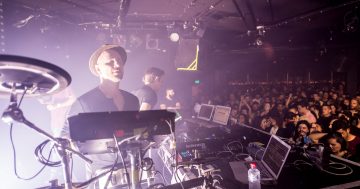
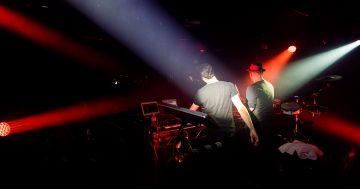
SR: Would you say Frankfurt has shaped your sound more than Berlin? How do you think your sound has changed after living in Berlin for 16 years?
A: Our roots are definitely in the Frankfurt scene. When we first moved to Berlin in 2002, Get Physical had only just started in Frankfurt because everybody actually lived in Frankfurt. DJ T had a club there called The Monza, which was actually our living room back in the 90s, and the sound of Get Physical was created to work in this 300 capacity club to capture that feeling of having just a few hundred people together. So it started in Frankfurt and went to Berlin. I like to believe that the later success of Get Physical along with other Berlin labels influenced our sound a lot, but the roots are definitely set in the Frankfurt sound.
SR: There’s always a very strong visual component to your music also. Do you think your album artworks lend themselves to the nature of the music?
A: Yes, definitely. The visual side of the music has always been important to us, so that’s why we’ve always had visuals running alongside the music. This was inspired by how we produced Memento when we had movies running in silence while we created the album, so this cinematic visual element was always very important. Something that runs throughout the album artworks is this balance between an organic side and a mechanical side that we talked about before, except with the music. For us the album art should feel like something you can touch, almost this worn sort of appeal to it, it’s never totally clean and there are always layers and a bit of history to it.
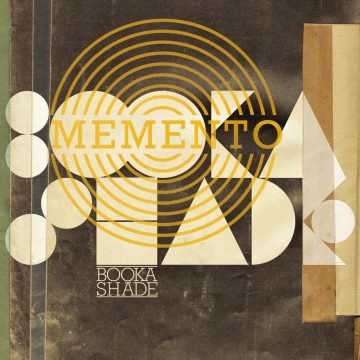
SR: You’ve expressed a liking towards Melbourne’s club scene, namely places like the the Prince Bandroom. What is it about Melbourne’s club scene in particular that you like?
A: There’s just something about Australia that we like. It was one of the places to tour that felt like the next step. Usually people don’t really care about the personal lives of the people who make electronic music. Techno was never really about the faces behind the music, but more about the audience having a good time, and the DJ was just the person who provided the music. However, Australia was one of those countries very early on where we had a close personal connection, and people would recognise us in the streets and come to talk to us, which was a totally new experience. Basically, all the tours and shows we’ve played in Australia have been a great experience and we have a lot of friends there too.
SR: Do you think we’ll see an Australian tour in the near future?
A: Nothing is fixed yet, but I’ll be disappointed if there isn’t one in at least early next year! Walter always finds the travelling a lot to handle, but once he’s there he loves it as well. We’re also coming out with a lot more new music as well, so we’ll have a lot more music to play out. Again, nothing’s fixed, but let’s see!
Booka Shade’s 7th full length album Cut the Strings is out now via Blaufield Music.
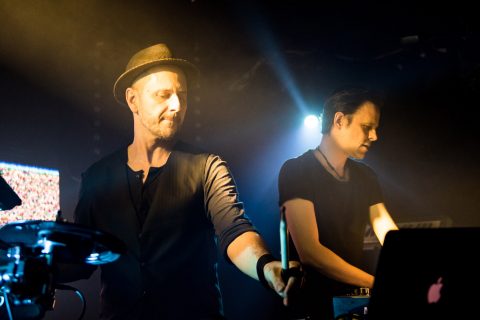
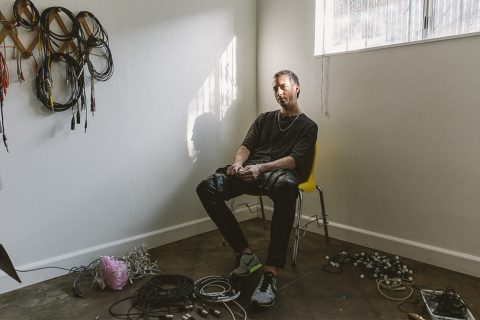
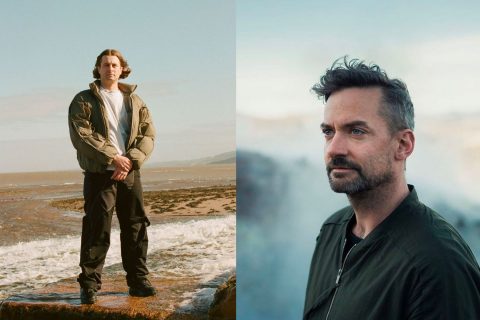
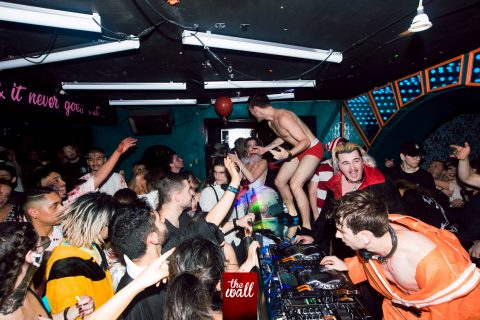

Comments